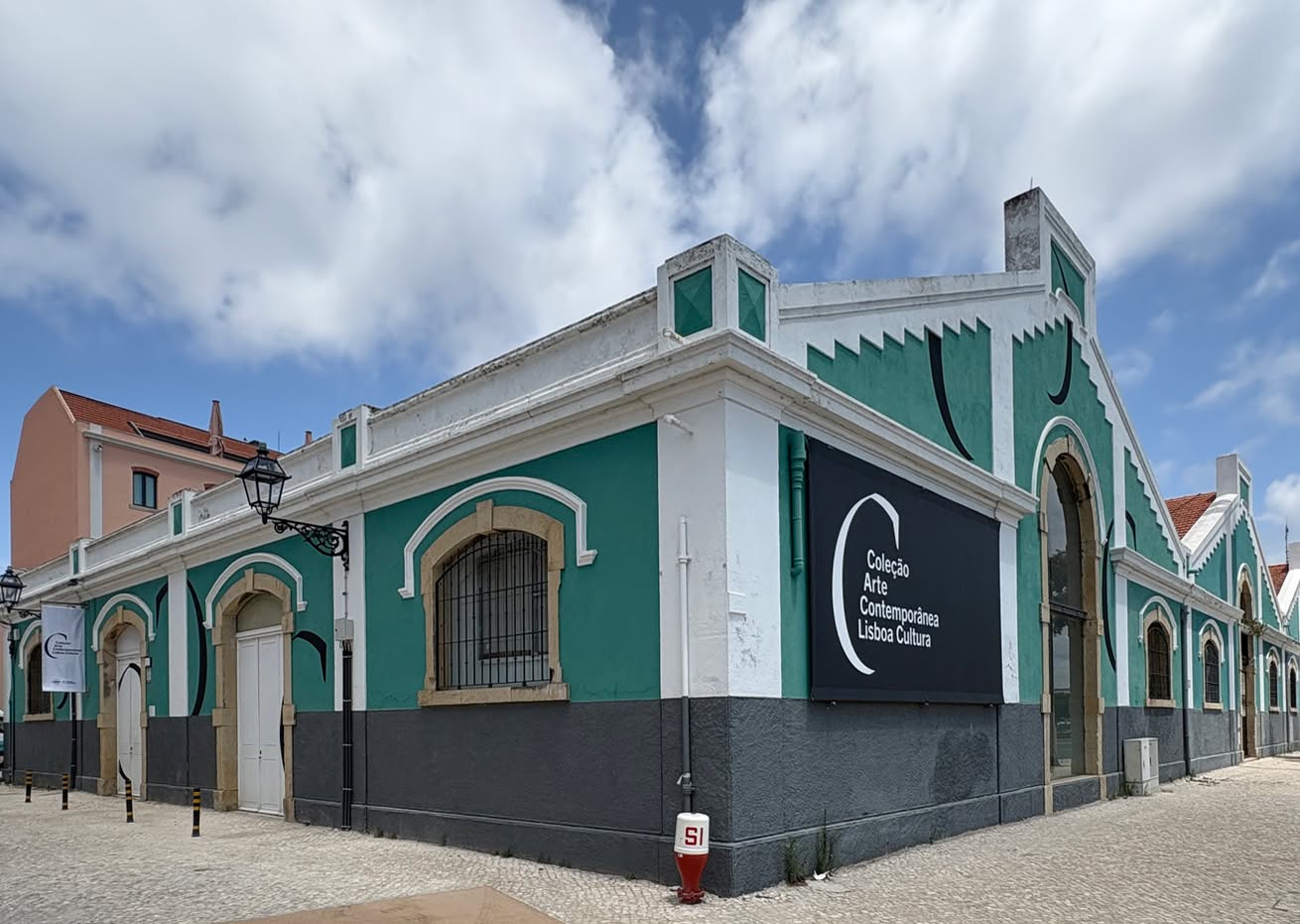With its usual clumsy steps, the penguin walks back and forth on a rock, right at the water’s edge. It looks at the large tank next to it, but its courage is slow to appear. There it stays, back and forth, without stopping. Around it, the other penguins sometimes swim, sometimes are rocked by the waves that wash up on the sand, sometimes hide in the holes in the rocks.
At Oceanário de Lisboa, since its inauguration in 1998, this is the first time that such a large reconstruction has been carried out in the animals’ habitats. For ten months, Magellanic penguins and Inca terns were hidden from visitors’ view, but now they can be seen up close in a larger space that recreates sub-Antarctic coastal areas, with rocks, waterfalls, ice, stalactites, and a swimming area with simulated tidal waves. The goal, explains Oceanário, was to “raise the standard of animal welfare and environmental diversification.”
Previously known as Antarctica, the area has also been given a new name following the nomenclature of the International Hydrographic Organization: Southern Ocean. Today, 29 Magellanic penguins live here, organized into a community, each with its own name, along with 12 Inca terns, which fly overhead, keeping an eye on what is happening below. For Xico, Sal, Zorrina, Frank and the other penguins, there is a whole new home to explore, from the most hidden corners where they can build nests to the bottom of the ocean, where they dare to dive.

To see them underwater, it is worth going down to the ground floor of the Oceanário and sticking close to the glass of the tank – at feeding time, they swim by at high speed, in entertaining games of chase, to steal fish from each other’s mouths, as if there were not enough to go around. There seems to be no boredom here. And the only pressure is from the three cold waterfalls, which give the environment the coolness of the Southern Ocean.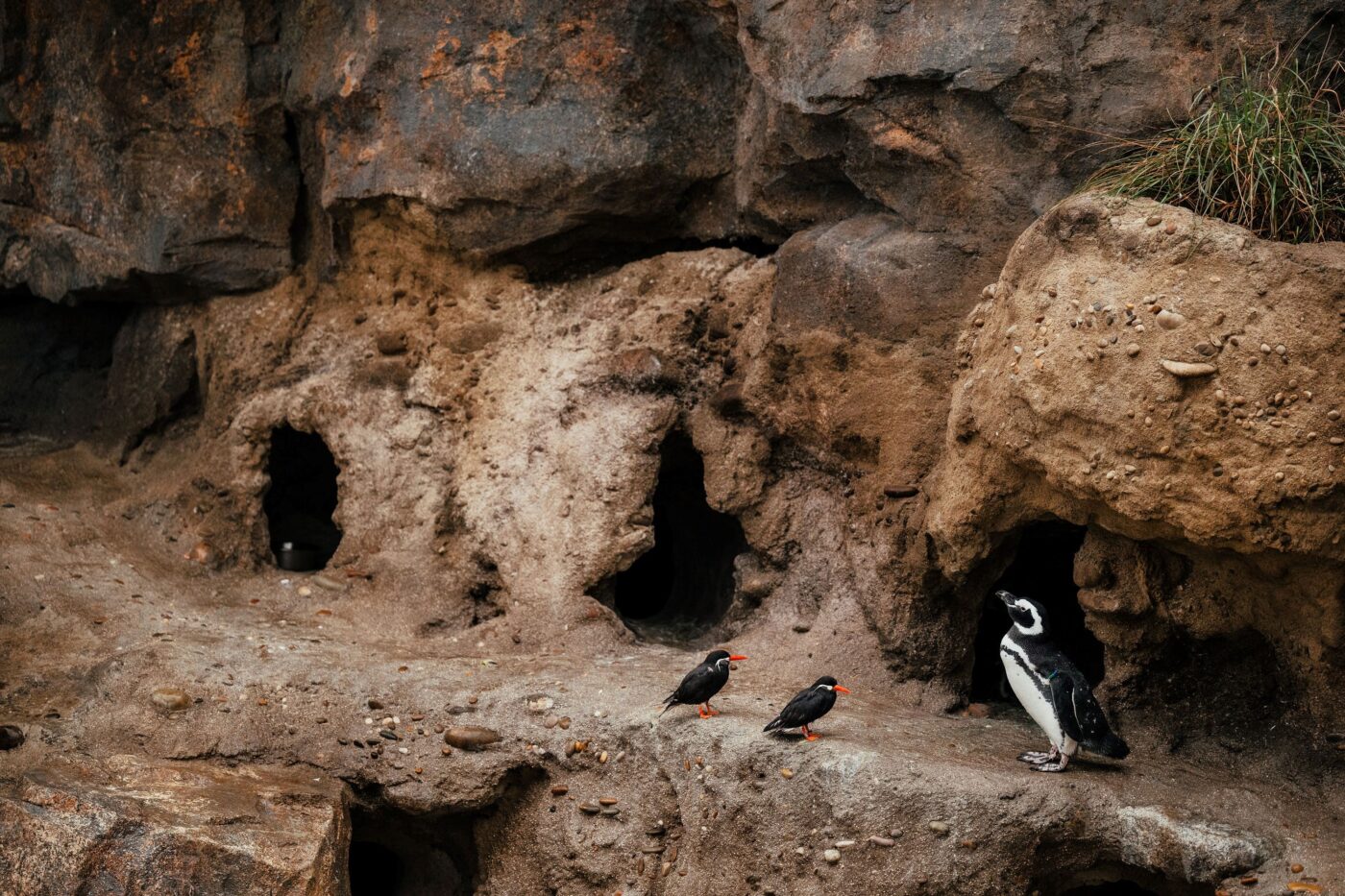
The aquarists assure us that the penguins were already missing visitors at Oceanário. The truth is that they all seem cheerfully calm… or almost all of them. But even that one, after several minutes of pacing back and forth, plucks up the courage and finally dives in, happy.
Imagine 5,400 square meters in the heart of Avenida da Liberdade, spread over four floors, a basement and an attic. In 2006, it became possible to occupy all this space for artistic purposes thanks to an initiative by sculptor and civil engineer António Bolota, to whom Banco Espírito Santo, owner of number 211 on that avenue, entrusted the management of the entire property so that he could launch what would become, in his own words, “a unique and singular collaborative experience in Portugal.”
The initial goal was to provide workspaces for artists. Besides Bolota himself, the first to “receive the keys” were Virgínia Mota, Daniel Barroca and Francisco Tropa, but until 2014, the year the bank that owned the property collapsed, more than four dozen artists came to “reside” on Avenida da Liberdade. This is without counting the hundreds who passed through there as part of various curatorial projects, ranging from visual and plastic arts to music or performance, with collectives such as The Barber Shop, Projecto Teatral and Parkour being particularly noteworthy.
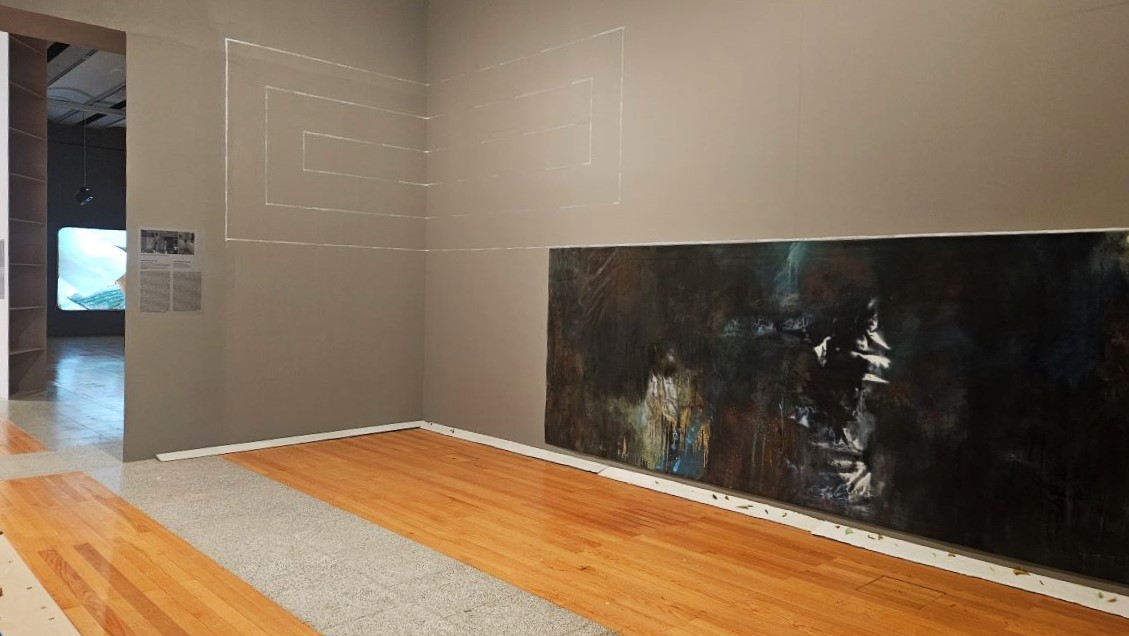
As Nuria Enguita, who curates the exhibition Avenida 211 – An Artists’ Space in Lisbon, alongside Marta Mestre, recalls, “that building was a place for experimentation and thought, and for almost a decade it functioned as a driving force for artistic development in the city of Lisbon.” Between the oldest resident artist, the painter and sculptor Pedro Morais, and the youngest, Diogo Bolota, number 211 on Avenida da Liberdade Between the oldest of the resident artists, painter and sculptor Pedro Morais, and the youngest, Diogo Bolota, number 211 on Avenida da Liberdade has housed several generations of creators in its rooms. In that space, the recently deceased João Queiroz produced the marvelous sets for João Botelho’s film adaptation of Eça de Queiroz’s Os Maias; Gabriela Albergaria conducted her research on the Oxford Botanic Garden, which led to the publication of Hither and Thither, a mixture of academic guide and artist’s book; and Pedro Barateiro painted from the anti-troika demonstrations marching Avenida da Liberdade. Furthermore, Avenida 211 was the first home of Kunsthalle Lissabon, and the city remembers the music and performance events organized by Filho Único, “which brought together more than 700 people,” including memorable concerts by Norberto Lobo, Kimi Djabaté and Tó Trips.
“Avenida provided a different experience for each artist, but the nature of the project was collaborative, which meant that the space was very much shared,” recalls Bolota. Having a property on what is perhaps the most prestigious street in the city, “without having to pay rent, water or electricity,” ended up providing all the creators who passed through there “a very fertile period for artistic production.”
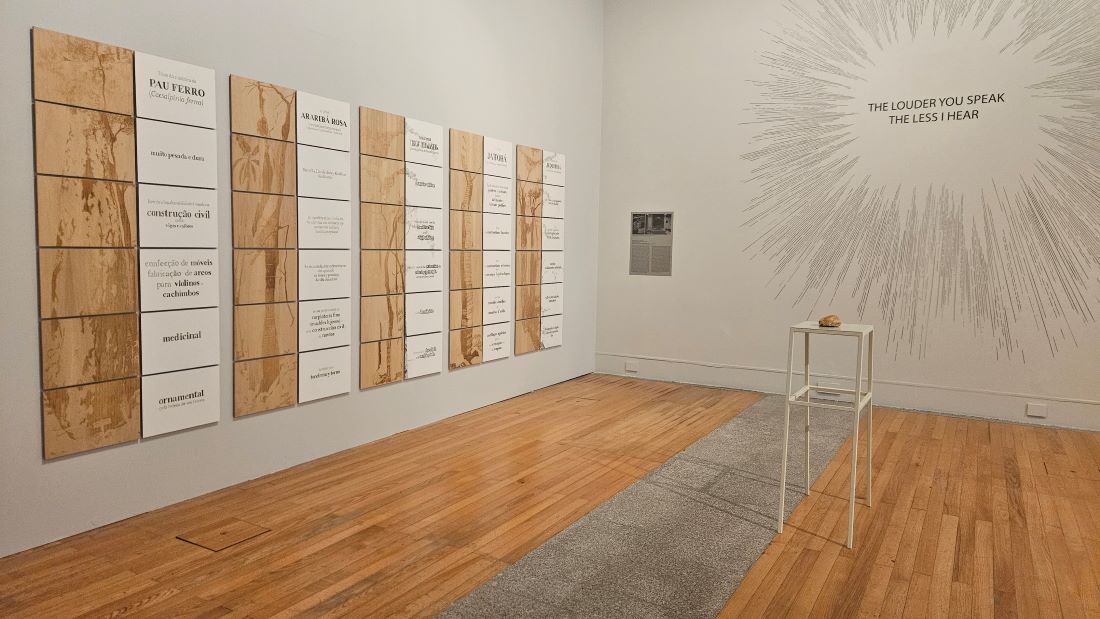
Until April 2026, at MAC/CCB, through works by around 60 artists who crossed paths at 211 Avenida da Liberdade, visitors can explore the yearsthat preceded the financialization of the city, which puts the square meter in that area at the “modest” figure of €9,285 at current values. To emphasize this, and to affirm that everything we will see would be impossible today, the exhibition begins precisely with a square meter marked out on the floor and, inside it, the current price charged.
After a first room offers a glimpse of the marvelous 19th-century building on the corner of Rua Rosa Araújo, following the research carried out by Giorgia Casara and Sara de Chiara, the visitor follows a more or less arbitrary route, since there is no set itinerary for seeing Avenida 211. There are four more rooms whose discourse results from a “dialogue with the artists and the exploration of the material”. Essentially, as Enguita points out, the aim was to convey in this exhibition the spirit of “open space, a mobile ecosystem of people coming and going,” which defined life in the building until just over a decade ago.
As António Bolota is keen to point out, “10 years after the Avenida closed, I see in this exhibition the same freedom that we all shared in that space.” As if we could still witness creators like Pedro Henriques, Carla Filipe, Diogo Evangelista, Joana Escoval or Pedro Tropa watching life go by from the building’s windows, in a time when it was possible to have artists’ studios overlooking the avenue.
The Casa Capitão Opening Party, which runs for three days, from this Friday, 19, until next Sunday, already lets you guess what’s to come. This weekend’s programme includes concerts, clubbing, performances, children’s workshops, film screenings, workshops, book presentations, and food. This is what this “mini cultural center” is intended to be, as defined by Gonçalo Riscado, one of the two directors (along with his brother João) of the most recent project by CTL – Cultural Trend Lisbon, which recently closed Musicbox, in Cais do Sodré.
They’ve long been considering how to transform 119 Rua do Grilo, after signing a concession agreement with the Lisbon City Council for its operation over five years ago. The building is part of what is now known as the Beato Innovation District, the complex that resulted from the conversion of the former Military Maintenance factories, founded in 1897.
With the pandemic, everything was postponed, but during the two summers when only outdoor events or limited attendance were permitted, they created a pop-up there, taking advantage of the terrace to host concerts and various other activities (more than 600, counting those that could be held indoors). Then, they set out to find the conditions that would allow them to move forward with the complex renovation work on the space that served as the residence of the former Military Maintenance commander.
From the Attic to the Terrace
This Friday, the doors of this project finally open, which Gonçalo Riscado admits is “risky” due to its ambition and scale. Organized by “floors”—Ground Floor, First Floor, Attic, Patio and Terrace—these spaces are designed to be fully flexible and capable of hosting a variety of activities. While the ground floor houses the multipurpose room that perpetuates the Musicbox legacy and seats approximately 400 people, but can be adapted for a much smaller audience, the blackbox in the Attic can host clubbing nights, as well as performances, workshops, and more intimate shows. Outside, the Patio serves as a natural stage for a variety of artistic interventions, and the Terrace has been transformed into a small open-air auditorium.
The first floor offers a privileged location for two of Casa Capitão’s signature features: Mesa and Quiosque. In the dining area—”we don’t call it a restaurant because food is also a cultural intervention,” argues Gonçalo—sandwiches made with papo-secos cooked right there will be on sale, on a menu designed by chef Bernardo Agrela, who will organize special dinners (with tickets, as if it were a show) and meetings with other chefs and creators. They also promise to use the grill and host a barbecue on Saturday, as well as feijoada on Sunday, in partnership with Gira collective.
The Quiosque, meanwhile, features programming centered around books. “It’s like our own little Festival Silêncio [one of CTL’s projects]: the word as a unit of creation, as a starting point for planning anything and discussing anything,” explains the cultural manager. Mesa de Cabeceira (Bedside Table) will be Quiosque’s regular programme, inviting guests to select books for sale and, around them, organize activities (the debut will be with Joana Guerra Tadeu). Also taking place at Quiosque in October will be several initiatives from MIL – Lisbon International Music Network, the festival organized by CTL dedicated to “the discovery, promotion, appreciation, and internationalization of contemporary popular music and a reflection on cultural policies and practices.”
Finally, at Casa Capitão, Baile will take place, the brand that describes “the place after midnight, for dancing” and which can take place anywhere in the building.

Culture as action
The idea is to have regular programming and for the doors to be open day and night, especially on weekends. On Saturdays and Sundays, says Gonçalo Riscado, hours can extend from ten am to six am “We want people to come, encounter each other, and also encounter things they wouldn’t expect. These meeting places for different arts and different audiences have always been of great interest to us, and I think it’s through them that community and critical thinking develop.” Therefore, he defines Casa Capitão as “a place for being, for community, for critical thinking, for debate, for encounters, and for opportunities.” He reinforces: “Contrary to what people say, I believe there can be a space for everyone—everyone who connects with art and culture. We are all agents of culture, and we should all have the opportunity to exercise our cultural rights. It is with this in mind that Casa Capitão emerged.”
Perhaps this is why the name they chose for the project is not surprising. “We’ve come to occupy a military building, and if there’s anything that brings joy and reminds us of freedom and revolution, it’s the Captains of April. This will, therefore, be a place of remembrance and advocacy for the importance of acting on that memory. We want to embody this in our programming and interventions.”
Those who enter are not mistaken, as they clearly state this right from the outset in their introduction on the Casa Capitão website: “We believe in culture as action, critical and collective force. A place of freedom and disobedience, where diverse voices, experiences, and worldviews meet in dialogue. We take a clear stance against all forms of oppression. In our house, there is no room for xenophobic, racist, sexist, LGBTphobic, or discriminatory discourse. We welcome those who create and participate. We value artistic freedom, critical thinking, attentive listening, and working together.” For Gonçalo, it’s important to say this bluntly and without mincing words. “We need to have manifestos because, contrary to what we thought, there are many things we took for granted that are not. I think we are, once again, living in a time of struggle.” And it must be based on these statements, which must then be substantiated in practice, in the way we program and behave.”
If there were any doubts, one would only need to check the programme already announced for these three days and the coming months. It’s up to Capicua, this Friday, to be the face of the launch of this house that’s for everyone.
From the lively intersection of the performing and visual arts, music, and cinema, comes the “Camino Irreal,” the title of this unprecedented edition of BoCA, held simultaneously in Lisbon and Madrid. This reinforces, in the view of the biennial’s directors, “the Iberian axis of artistic creation and presentation.”
For John Romão, the last time he directs the program (the curator is, since ,April the artistic director nominated for Évora 2027 – European Capital of Culture), it is “an invitation to deviation, to symbolic displacement, and to the possibility of reconfiguring the place of the artist and the spectator” in this “increasingly distorted current reality.” And, if the post-truth era has already imposed a perception of reality, such that “we question everything we took for granted,” Romão believes that artists are the ones responsible for “bringing new imaginaries capable of challenging it.” Perhaps for this reason, the dozens of artists involved in this BoCA are focusing on deviant and resistant projects.
The first major moment of this “detour” falls to musician Dino D’Santiago, who, at Romão’s invitation, accepted the challenge of staging a five-act opera that “intersects history, culture, and Portuguese multicultural identity.” Adilson, says the musician, takes the title from the name of the protagonist, “a man of African descent, born in Angola to Cape Verdean parents, who has lived in Portugal for over 40 years without ever having obtained Portuguese citizenship.” With a libretto by Rui Catalão, the play interweaves this story set amidst the “bureaucratic labyrinth that prevents Adilson from being fully recognized by the country where he has always lived” with “other testimonies of social injustice and discrimination.” It premieres September 12 at Centro Cultural de Belém.
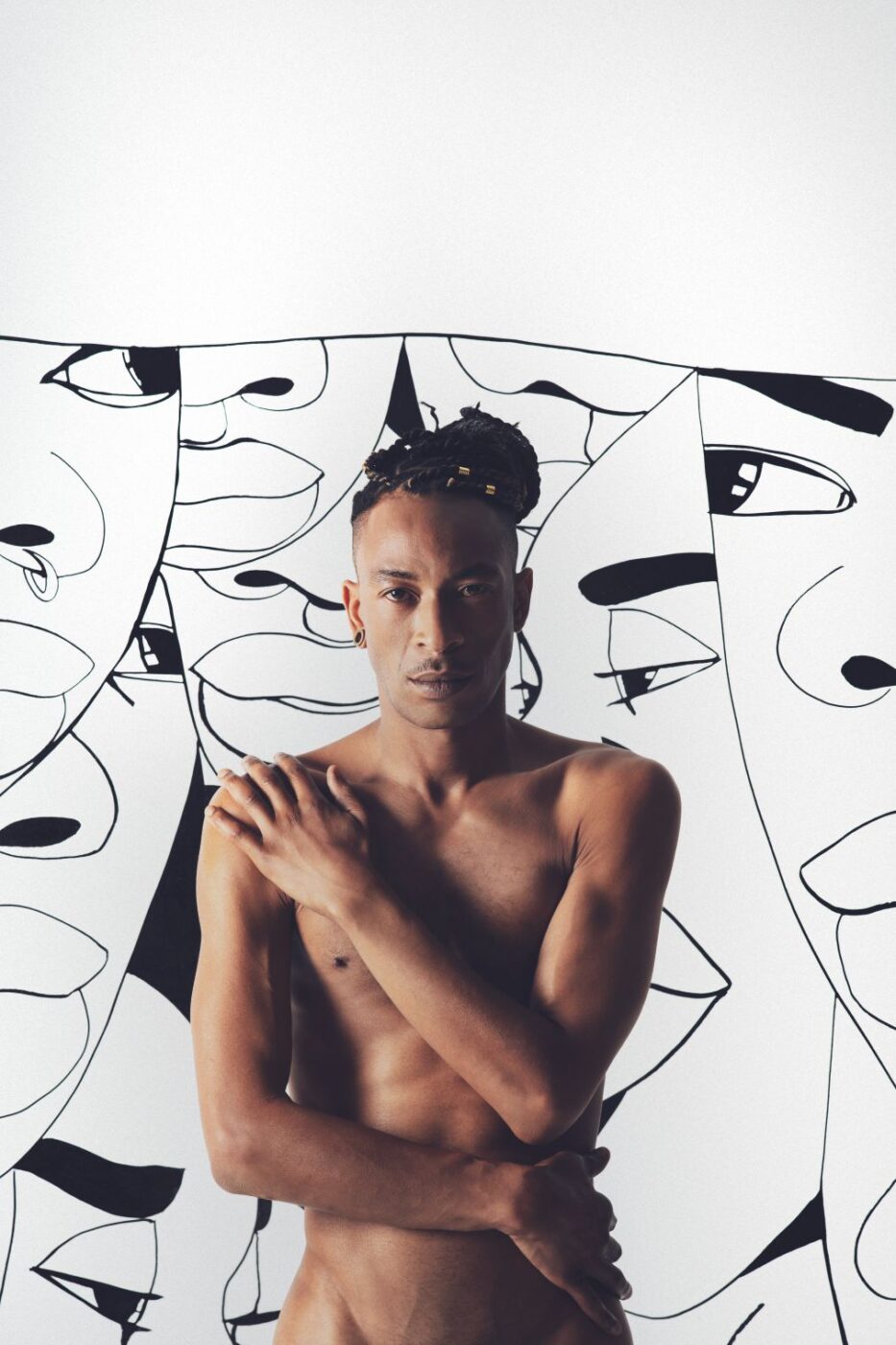
A couple of days earlier, on September 10, the biennial officially opens with an emblematic work by Alberto Cortés, considered one of the artists “most prominent in the Spanish theater scene today.” After having passed through Porto last May, Analphabet brings to Teatro do Bairro Alto “the invention of a queer myth” through which, a kind of Peter Pan, “a romantic spirit,” manifests itself to couples in crisis, “not to heal, but to reveal.”
Cortés also has another project underway at BoCA, this time a surprising artistic collaboration with the Portuguese painter João Gabriel. Scheduled to premiere in early October at Teatro de La Abadia in Madrid, Os Rapazes da Praia Adoro, takes as a reference the intimacy present in the audiovisual archive of pornographic cinema from the 1970s and 1980s [of the 20th century] that inspires João Gabriel’s paintings” with the poetry of words and bodies that revealed themselves as landscapes in Cortés’ theater. The play arrives in Lisbon, also at Teatro do Bairro Alto, in the last days of the biennial, on October 25 and 26, and is one of the collaborations between Portuguese and Spanish creators – there are plays by Tânia Carvalho with Rocío Guzmán (Nossas Mãos) and by Francisco Camacho with Elena Córdoba (Uma ficção na dobra do mapa).
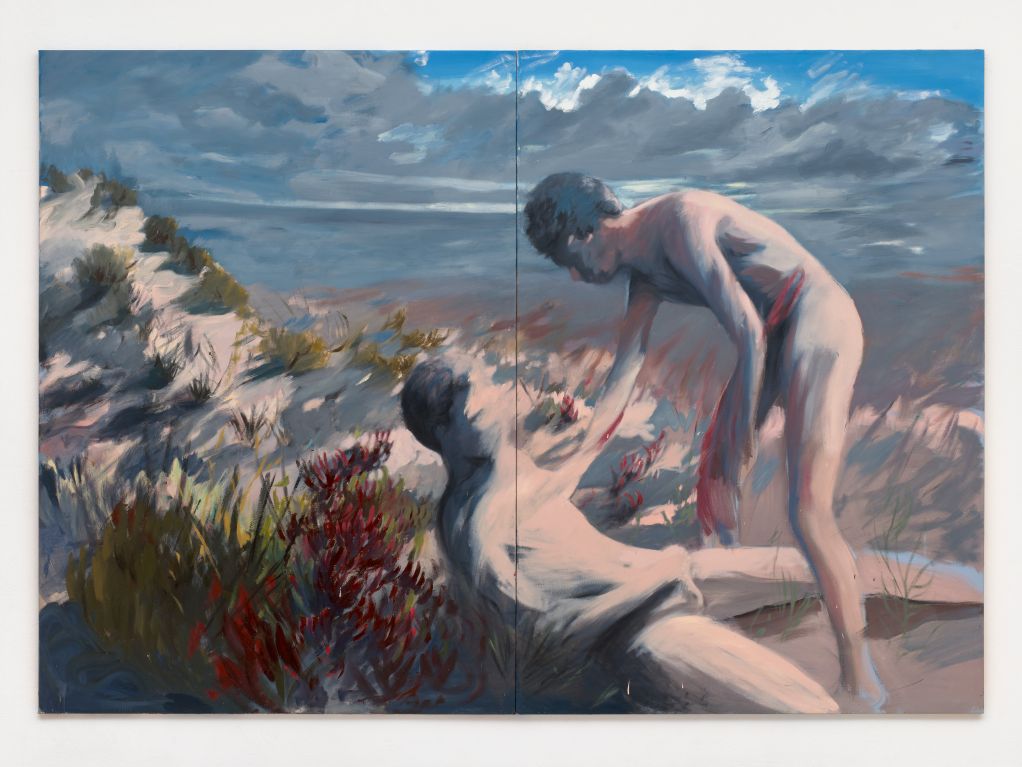
With the program still to be finalized, and pending the announcement of more artists, Romão highlighted at the press conference as “one of the main bets of this edition” the world premiere of Coral dos Corpos sem Norte, the latest creation by Angolan artist Kiluanji Kia Henda. In addition to a show about travel and migration, which premieres at Sala Estúdio Valentim de Barros on September 20, the project includes a powerful installation at MAAT, open from October 4 to November 3, with three performance activations, with free admission, on October 5, 12 and 19.
Another major highlight of the Lisbon biennial is Milo Rau’s latest creation with French playwright and activist Servane Dècle, The Pelicot Trial. Premiered in Vienna and after a run at the Avignon Festival, this “performative reading” arrives in Lisbon, a tribute to Gisèle Pelicot, a woman who was the victim of more than 200 rapes under chemical subjugation over the course of a decade. A play that seeks to restore “the dignity of voice to those who have been silenced,” to be seen on October 11 at the National Pantheon.
In the cinema area, BoCA, with Cinemateca Portuguesa and Filmoteca Española, presents Malamor/ Tainted Love, a series in which filmmakers João Pedro Rodrigues and João Rui Guerra da Mata place their work in dialogue with that of others, such as John Waters, Pedro Almodovar, Rainer Werner Fassbinder and Lucio Fulci. In addition to this “carte blanche” of sorts, which takes place simultaneously in Lisbon and Madrid, there are also two new creations: the world premiere of the short film 13 Alfinetes, a BoCA commission dedicated to the iconography of Saint Anthony, also present in the Spanish capital through Goya’s frescoes in the Hermitage of San Antonio de la Florida; and the film installation With No Before and After, on display at Sociedade Nacional de Belas Artes from September 11.
Other highlights of the biennial in the portuguese capital: Toda la Luz del Mediodía, by Lisbon-based Spanish artist Julián Pacómio (September 13 and 14); Ocean Cage, “an immersive and powerful show” inspired by “stories of the inhabitants of Lamalera” and centered on “issues of solidarity, economic coexistence and disappearing ecosystems,” by Chinese visual artist Tianzhuo Chen and Indonesian performer Siko Setyanto (September 19 and 20); Yo No Tengo Nombre, a performance installation at Estufa Fria by Catalan theater collective El Conde de Torrefiel (October 9 to 15); A Beginning #16161D, by Spanish duo Aurora Bauzà & Pere Jou (October 24 and 25); and Totentanz, by Marcos Morau and La Veronal (also on October 24 and 25)
Four Leading Playwrights at the Prado Museum
Following artistic residencies at the Prado Museum in Madrid, Tiago Rodrigues, Patrícia Portela, Angélica Liddell, and Rodrigo García have now written and directed creations inspired by works from the collection of one of Europe’s largest museums, in a series entitled Words and Gestures: for a Performative Collection at Museo del Prado. John Romão explains that the performances will be “presented in four different rooms, lasting approximately 20 minutes, and offering a unique experience that the public is invited to take in a closed-door Prado Museum.” For those planning a trip to Madrid, make a note in your calendar: this rare event takes place on September 27 and 28, and October 4 and 5. The painting from the museum’s collection that inspired Patrícia Portela has already been unveiled and will provide the inspiration for the play that the Portuguese playwright is preparing, with a performer: El 3 de mayo en Madrid o “Los fusilamientos”, by Francisco Goya.
This year, the area gained new life with the arrival of the brand new MACAM, Pavilhão Julião Sarmento and the recently opened Espaço C, which join the already emblematic group formed by MAC/CCB, MAAT and Galeria do Torreão Nascente. Easily accessible from the centre of Lisbon, with the Tagus River always as a backdrop, this stimulating axis invites you to discover one of the city’s most dynamic cultural hubs.
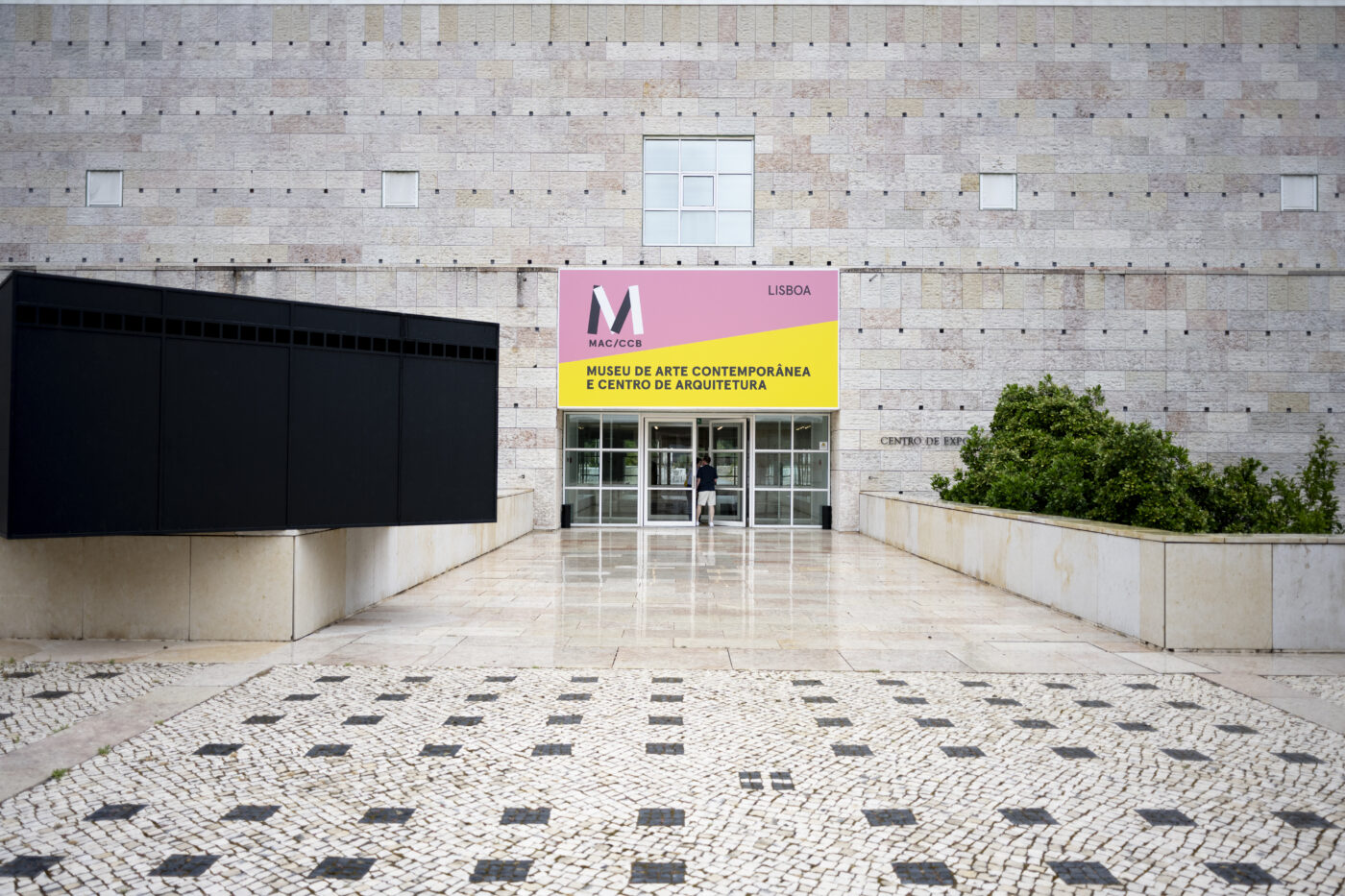 MAC/CCB – Museu de Arte Contemporânea
MAC/CCB – Museu de Arte Contemporânea
Opened on October 27, 2023, the MAC/CCB, which succeeds the former Museu Coleção Berardo, aims to promote dialogue between modern and contemporary art, architecture and performing arts. The museum, considered one of the main cultural centers in Lisbon, houses important collections of contemporary art, such as the State Contemporary Art Collection (CACE), the Teixeira de Freitas Collection, the Holma/Ellipse Collection and the Berardo Collection.
With two permanent exhibitions – An Atlantic Drift. The Arts of the 20th Century based on the Berardo Collection and Object, Body and Space. The revision of artistic genres from the 1960s onwards – which brings together works by names such as Modigliani, Amadeo de Souza-Cardoso, Marcel Duchamp, Lourdes Castro, Piet Mondrian, Pablo Picasso, Andy Warhol, Helena Almeida, Wifredo Lam, René Magritte, Max Ernst and Salvador Dalí – the MAC/CCB is currently presenting three temporary exhibitions: Experiences of the World, which speaks, above all, of art as an experience in its critical, revealing and poetic capacity to think about the world; Chantal Akerman. Travelling, which traces the unique trajectory of the Belgian filmmaker, writer and artist; and Uncensored Posters | April 25 and the «Hot Summer» Revolution, with pieces that are visual testimonies of a period of political and social transformation, rescued from the walls where they were originally displayed and in a portfolio of drawings for five decades.
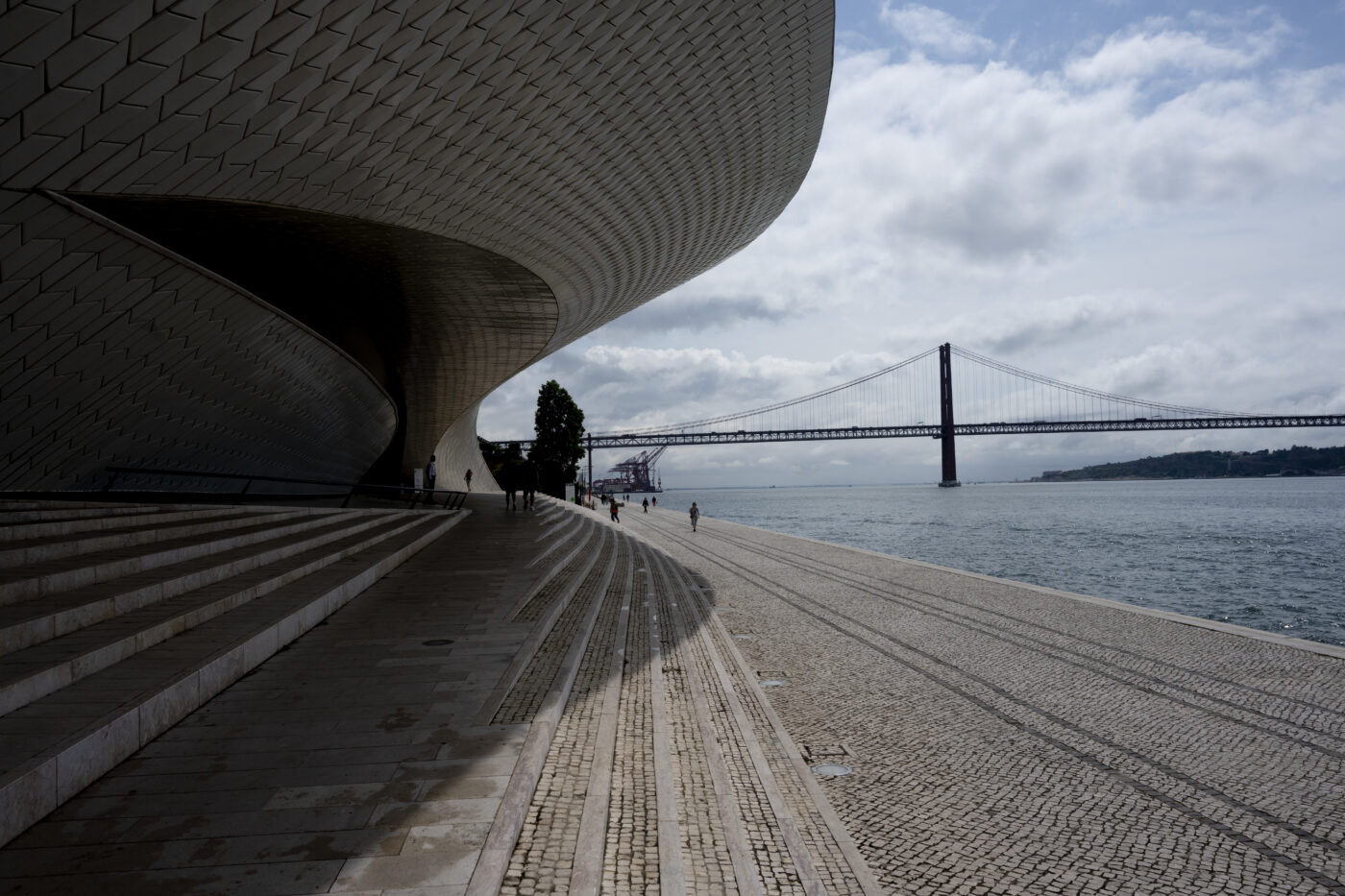 MAAT – Museu de Arte, Arquitetura e Tecnologia
MAAT – Museu de Arte, Arquitetura e Tecnologia
Opened in 2016, it has quickly become one of Lisbon’s most innovative cultural institutions and a must-see for anyone who wants to explore the intersections between art, architecture and technology. Comprising two distinct buildings: the historic Central Tejo and the modern building designed by British architect Amanda Levete, known as the MAAT Gallery – characterized by an undulating façade covered in white ceramic, designed to reflect the light of the Tagus and create a harmonious interaction with the urban landscape – the museum is dedicated to promoting critical discourse and creative practice.
In addition to temporary and permanent exhibitions, the program also includes a diverse schedule of events, such as talks, conferences, performances and workshops, which encourage critical thinking and international dialogue. The Electricity Factory, the permanent exhibition, presents original machinery through which the history of this old factory is told, as well as the evolution of electricity to renewable energy. MAAT currently has four temporary exhibitions: Jeff Wall – Time Stands Still. Photographs, 1980–2023; 15th edition of the EDP Foundation New Artists Award; Miriam Cahn – What looks at us; and Pencils for colouring grey days: Works from the EDP Foundation Art Collection.
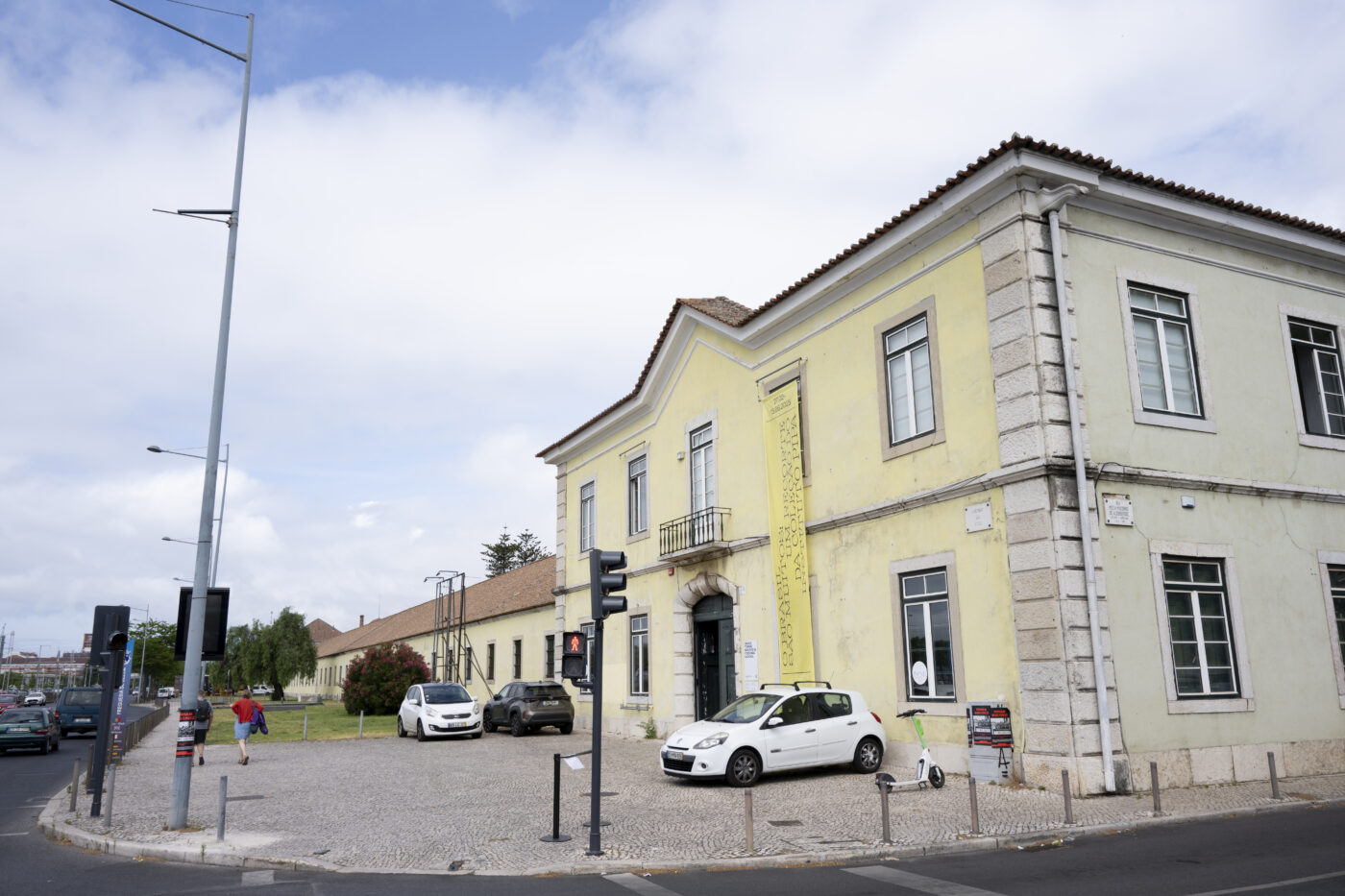 Galeria do Torreão Nascente da Cordoaria Nacional
Galeria do Torreão Nascente da Cordoaria Nacional
Part of the Lisbon Municipal Galleries, which brings together five spaces in different areas of the city, Torreão Nascente is located in the historic Cordoaria Nacional, on the riverbank, and is a space of historical and heritage value, located in one of the first industrialized areas of Lisbon. This exhibition space stands out for its late Pombaline architecture and bold programming, which reflects the diversity and richness of contemporary art.
Since 2003, the Torreão Nascente Gallery has been the stage for exhibitions by established and emerging national and international artists. The program covers various artistic languages, including painting, sculpture, photography, video and installation. A bookstore installed on site offers a range of publications related to the exhibition projects of Lisbon Municipal Galleries.
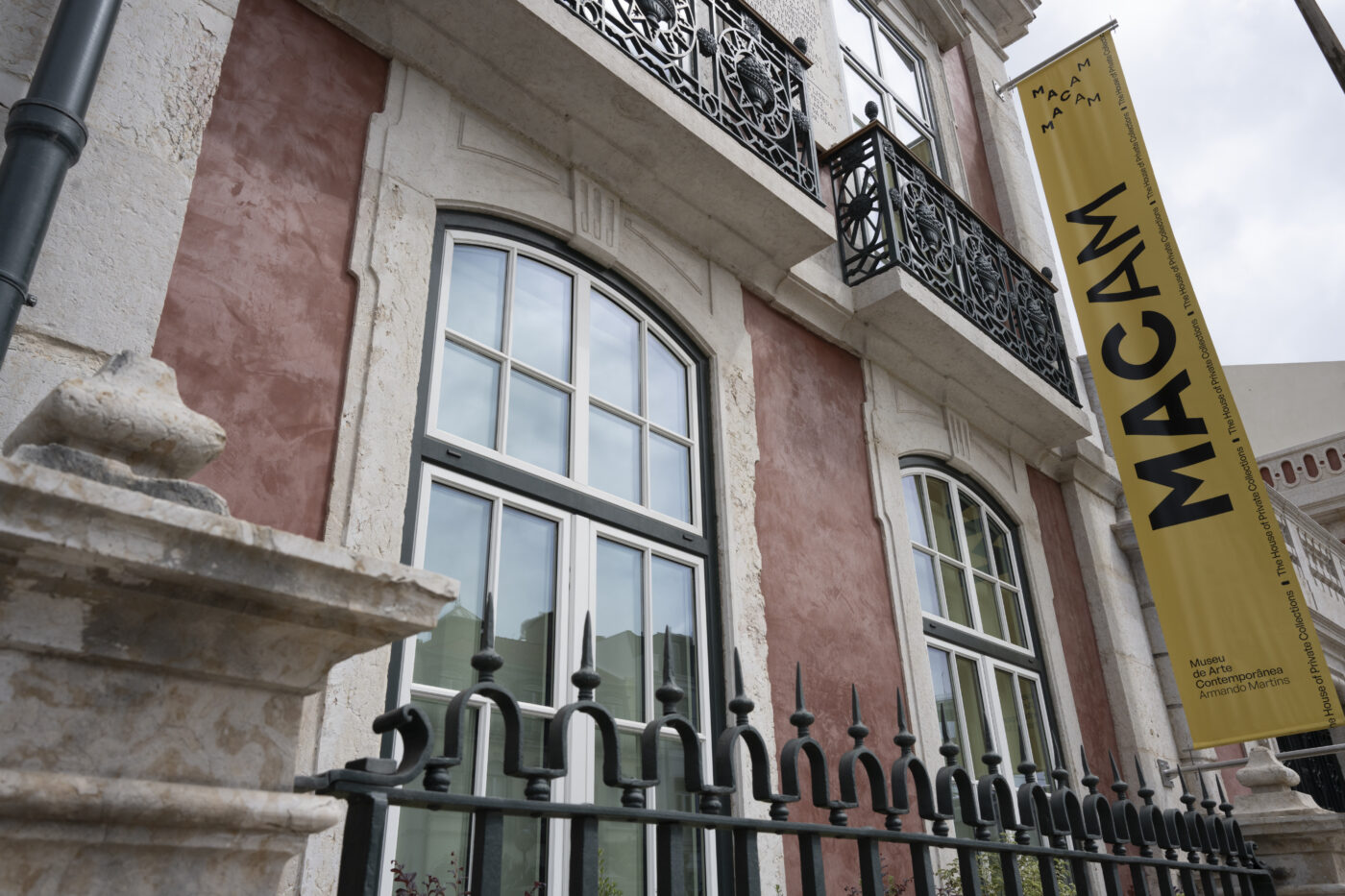 MACAM – Museu de Arte Contemporâneo Armando Martins
MACAM – Museu de Arte Contemporâneo Armando Martins
Born from the desire of businessman Armando Martins to showcase his personal art collection, MACAM brings together a museum and a five-star hotel in the same space, an innovative concept and the first of its kind in Portugal and Europe. Housed in the historic Palácio Condes da Ribeira Grande, which dates back to the early 18th century, on Rua da Junqueira, MACAM is one of the most innovative additions to Lisbon’s cultural scene.
Described as The House of Private Collections, the museum houses, in addition to the collection of its founder – one of the most important in the country, started in 1974 and which includes more than 600 works of modern and contemporary art, national and international, from the end of the 19th century to the present –, collections of other private collectors. Along with permanent and temporary exhibitions, MACAM also offers a diverse cultural program. Highlights include the restored chapel, transformed into a bar and stage for performing arts, and the site-specific works of art by artists such as José Pedro Croft, Carlos Aires and Angela Bulloch.
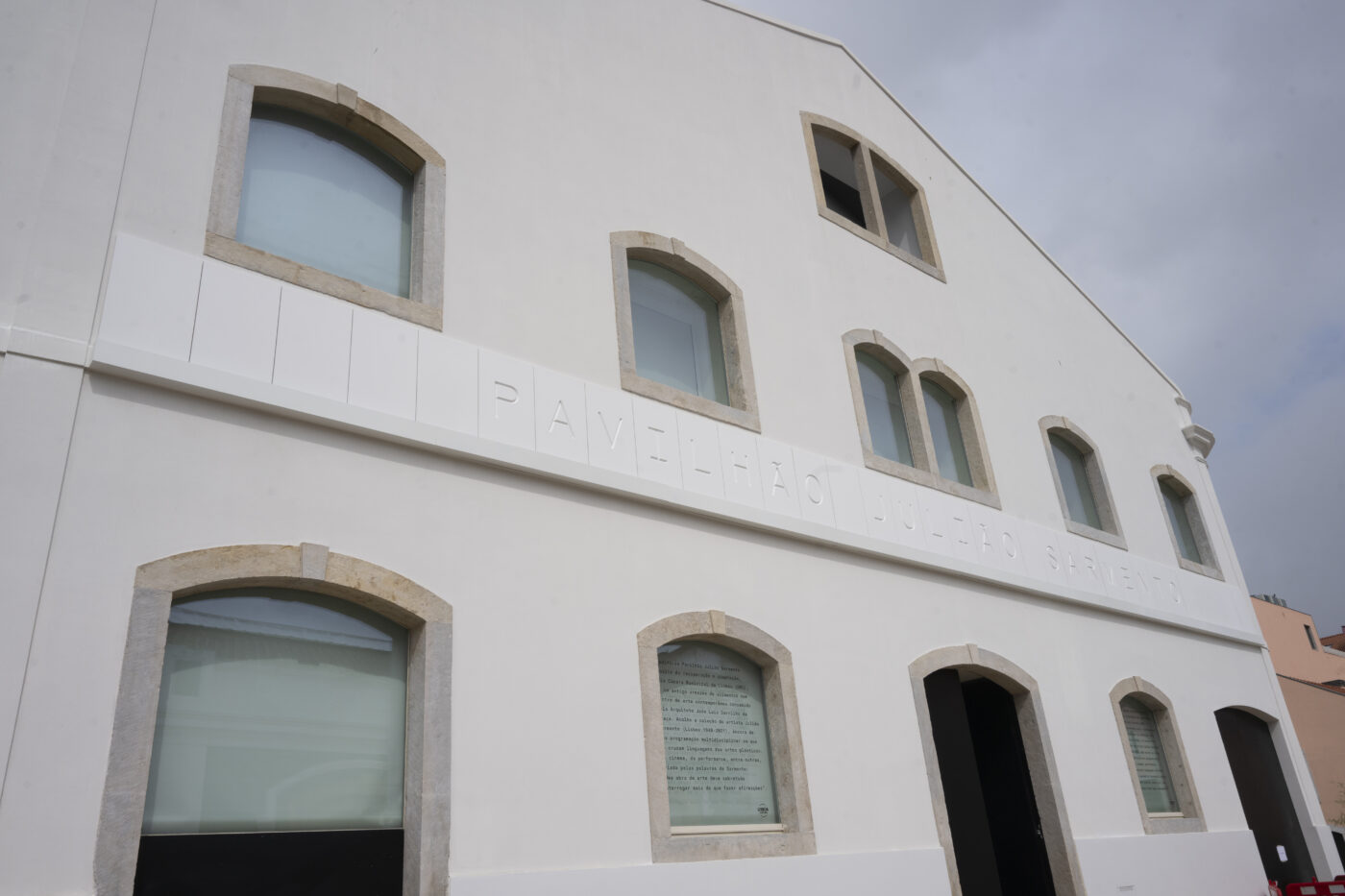 Pavilhão Julião Sarmento
Pavilhão Julião Sarmento
Last month, an art center dedicated to the private collection of Portuguese artist and collector Julião Sarmento (1948–2021), started in 1967 and comprising more than a thousand works, including paintings, sculptures, videos, installations and objects, opened. It is worth noting that only five percent of the pieces were acquired; the rest are the result of exchanges or gifts from other artists and collectors. Located on Avenida da Índia, in Belém, the municipal building, a former food warehouse presumably built in the late 19th century, was adapted to serve as a center for contemporary art, and the architectural project was designed by architect João Luís Carrilho da Graça, at the artist’s own request.
Under the artistic direction of Isabel Carlos, the Julião Sarmento Pavilion proposes an interdisciplinary program that goes beyond traditional exhibitions, incorporating cinema, literature, music, fashion and other forms of artistic expression. The goal is to create a living art center focused on experimentation, production and the intersection of artistic knowledge, reflecting the transversal spirit that characterized Sarmento’s life and work. The Pavilion opened with the exhibition Take 1, in homage to the diversity of artistic expressions that have always attracted him, cinema being one of the main ones.
Espaço C – Coleção Arte Contemporânea Lisboa Cultura
Recently opened, this new space will host different exhibitions from the Lisbon City Council (CML) Contemporary Art Collection, which already has over 200 pieces and around 130 artists represented. WHO WHERE / QUEM ONDE, the first of these temporary exhibitions based on and around the collection, presents around 50 pieces by 30 artists, including Ângela Ferreira, António Bolota, Diogo Evangelista, Eduardo Batarda, Fernanda Fragateiro, Francisco Tropa, Gabriel Abrantes, Jorge Queiroz, Jorge Molder, Luísa Cunha, Paulo Brighenti, Rui Chafes, Rui Toscano and Vasco Araújo. Showcasing both the art acquisitions made by the municipality for its collection in 2024, as well as those acquired in previous years, the exhibition reveals the conceptual and formal breadth and diversity of this contemporary art collection.
Espaço C and the works that will inhabit it, in different ways and formulations over the coming years, reaffirm the CML’s desire to continue to build and develop its collection, with the prospect of, in the future, integrating other authors and expanding the representation of those who compose it. In addition to supporting contemporary art, the CML collection also constitutes an incentive to collecting. Making this collection accessible will allow the creation of an intergenerational memory; contribute to transmitting the experience lived by one generation to another, remembering our present, the struggles, the resistance, the freedoms, the ethics, which must be part of all futures, and survive.
There are more than 50 artists from different nationalities, with a wide range of styles and influences. ArtBeat Fair brings together artists from various expressions of visual arts to celebrate the dialogue between cultures. In this free-entry exhibition, which will take place at Torreão Poente da Cordoaria Nacional from June 27 to 29, visitors will be taken on a “visual and sensory journey”, where they can combine the appreciation of the works on display with listening to live musical performances.
The idea came from three artists – the Portuguese Liliana Oliveira, the Italian Roberto Grosso and the French Luc Bernay – who met at an art event in Lisbon and decided to “create a project that was different from what already existed, one that would better meet the needs of artists”, says Luís Mesquita, director of the ArtBeat Fair. “We wanted to present art, of course, but in a logic of presenting emerging artists, helping them promote themselves and launch themselves into the market”, he emphasizes.
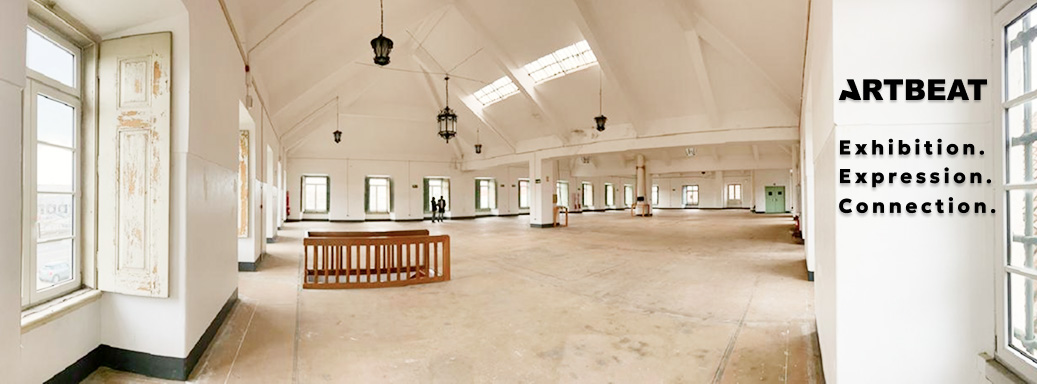
At the fair, where each artist has their own stand, the main objective is “for them to get to know each other, talk to each other and, at the same time, introduce themselves to visitors,” explains Luís Mesquita. This cultural exchange aims to expand the sharing of ideas, techniques and creative visions, inspiring new forms of expression and artistic experimentation, he says. “This physical presence of the artists allows them to perceive people’s sensitivity to the art they present,” he notes. The ArtBeat Fair, “an inclusive and unique space to celebrate art,” defines, thus becoming an opportunity for artists to showcase their work and sell their pieces without intermediary costs, also boosting the art scene. At ArtBeat – the name comes from the combination of art and music – the aim is for “people to live an experience where they appreciate art while listening to music.” For this reason, live performances are presented that integrate dance, music and visual arts, creating sensorial moments that, it is expected, will captivate the public. “There will be jam sessions, classical and electronic music, violinists, saxophonists and didgeridoo and kora sessions, for example”, says Luís Mesquita.
This first edition will feature the participation of 52 artists of 15 nationalities. Among professionals from the sector, collectors and general public, more than five thousand visitors are expected. A project that “does not end here”, it is promised. “We want to go to other cities and, eventually, even abroad”, reveals the director of the ArtBeat Fair.
The month of street parties and marchas and celebrations around the most beloved saint of Lisboners, Saint Anthony, has arrived. As expected, Lisbon is celebrating and, in a mix of tradition and contemporaneity, Lisbon City Council and Lisboa Cultura/EGEAC have prepared a programme that focuses on diversity to reach all audiences.
This year, the big moments are reserved for São Jorge Castle and Praça do Comércio. In the monument’s Praça de Armas there is Music in the Castle, a series of free concerts featuring the young pianist Gil Brito (june 7, at 6 pm), Rui Massena with his new project (on the same day at 7 pm) and Carminho, accompanied by André Dias, on Portuguese guitar, Flávio Cardoso, on fado guitar, Pedro Geraldes, on lap steel guitar and electric guitar, Tiago Maia, on acoustic bass, and João Pimenta Gomes, on mellotron (June 15, at 8:30 pm).
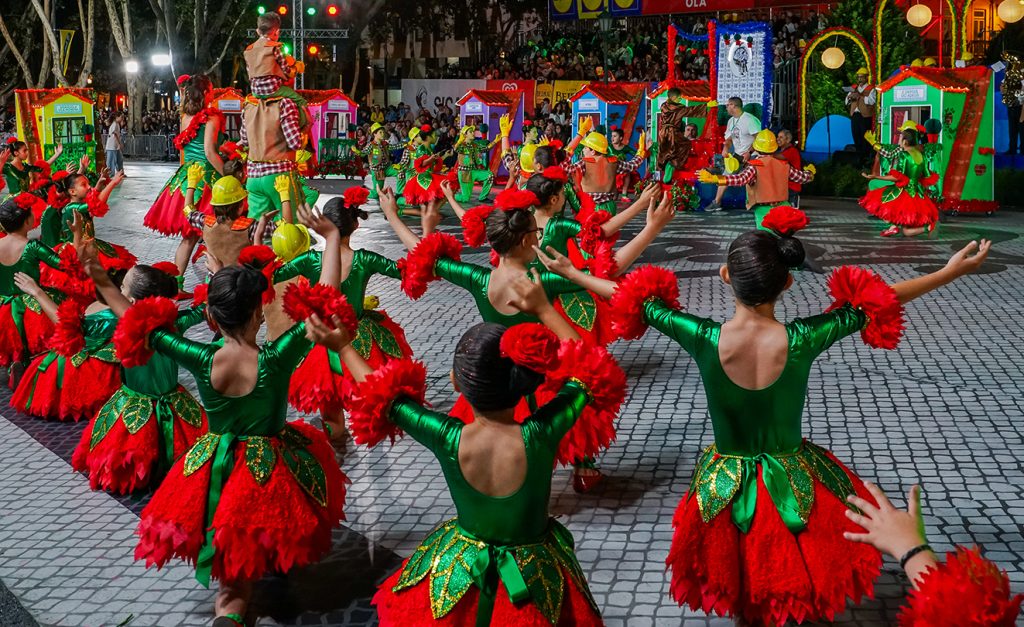
Meanwhile, just like last year, the closing of Festas de Lisboa is done in double dose in Praça do Comércio. First, on June 28, D.A.M.A. join a series of guests, such as Ágata, Bandidos do Cante, Beatriz Felício & Buba Espinho and Los Romeros, for a fusion between pop and traditional Portuguese music; the following night, the stage belongs to Bárbara Bandeira who, with the GNR Symphonic Band, revisits her main hits with orchestral arrangements and other surprises. Both shows are scheduled for 9 pm.
Festivals and diversity
For nine days, Lisbon hosts the major European event that celebrates equality and Human Rights. Under the theme “Proudly Yourselves”, Europride 2025 has a diverse and inclusive programme that will include a conference on human rights, exhibitions, workshops, lectures, sports activities, shows and performances and the March for LGBTI+ rights that is scheduled for the 21st between Saldanha and Praça do Comércio.

As part of the Portuguese capital’s presence at the Osaka Expo, the Japanese city comes to Lisbon with a special programme that includes exhibitions, workshops and cinema. The highlight is the exhibition Osaka – 55 anos depois, desenhar o futuro, which takes to MUDE – Design Museum (until the end of the month) the project designed by Frederico George and some pieces designed for the interior of the Portuguese pavilion at the Universal Exhibition in Osaka in 1970; and a cycle of Japanese feature and short films, at Cinema São Jorge (between June 5th and 7th), which will include the unmissable Tokyo Monogatari, by Yasujiro Ozu, or the spectacular Seven Samurai, by Akira Kurosawa.
Before that, on May 31 and June 1st, also at Cinema São Jorge, and in theaters and the street of the neighboring Parque Mayer, there is Around Classic, a festival that, says the organization, “promises to reinvent the way classical music is experienced and felt”. Still within the scope of festivals, don’t miss the Jazz Recitals by the final year students of Hot Clube de Portugal school, at Teatro da Comuna, from June 12 to 15.
Santo Antonio, Book Fair and Science
This year, the Festas will be present at the Lisbon Book Fair (from June 4 to 22, at Parque Eduardo VII) through a special programme in the municipal space, Lisboa Cultura auditorium, where talks, workshops and book presentations will take place. The city’s history and personalities such as Pessoa, Bordalo and Santo António set the tone for this programme designed in collaboration with the Lisbon Library Network.
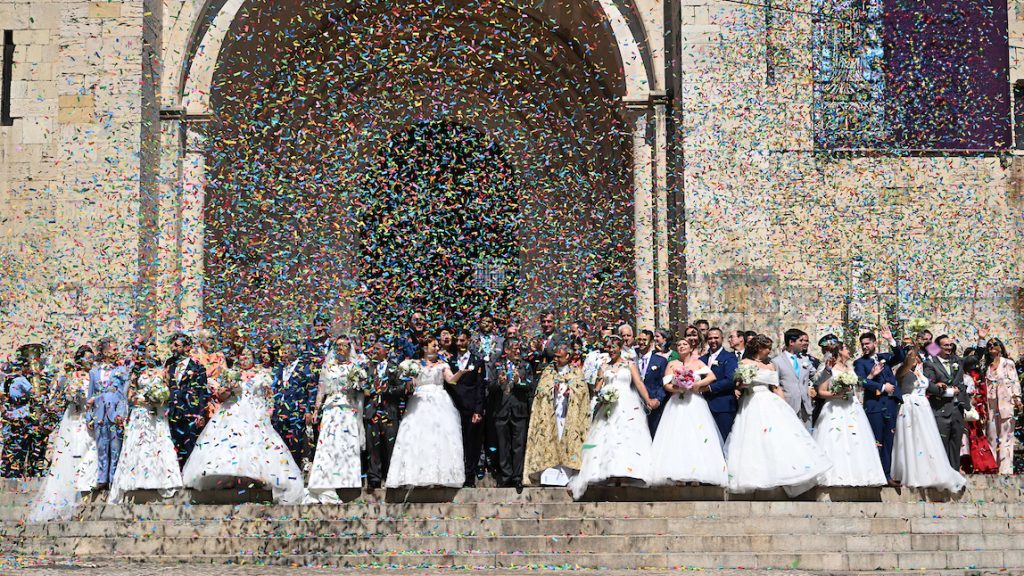
Speaking of Santo António, we cannot let another edition of the Trezena de Santo António pass by unnoticed, which, for 13 days in the first fortnight of June, combines faith with popular culture at Museu de Lisboa – Santo António, with fados and guitarradas, routes, workshops, an exhibition of Tronos de Santo António and a theatre show by playwright and director André Murraças.
As learning is also a celebration, the Agenda could not fail to highlight another edition of the Noite das Ideias, at São Luiz Municipal Theater. On June 25, starting at 6 pm, into the night, writers, poets, dancers, scientists, journalists, musicians, illustrators and philosophers come together around the theme Power to Act – In search of a new horizon of universality to think and debate the world. There is also space for performances, shows, literary meetings and workshops.
The full schedule for Festas de Lisboa can be found here.
Although they belong to different continents and generations, and their works are radically different in form, there seems to be, between Portuguese Paula Rego (1935-2022) and Brazilian Adriana Varejão (b.1964), a set of thematic affinities that justify an exhibition like Between Your Teeth, on display since April 11 at Calouste Gulbenkian Foundation’s CAM.
The first exhibition dialogue between the artists took place during Paula Rego’s lifetime, in 2017, at Carpintaria, a space dedicated to experimentalism and artistic avant-garde in Rio de Janeiro, in what was (surprisingly) the Portuguese artist’s only exhibition in that city. As Adriana Varejão herself acknowledges, during the press visit to the current exhibition, “my work has a very close relationship with Paula’s”. The artist adds that, “we often look to themes from History or the fictional universe to uncover the most apparent layers and unearth what is most hidden in the narratives used by patriarchal society.”
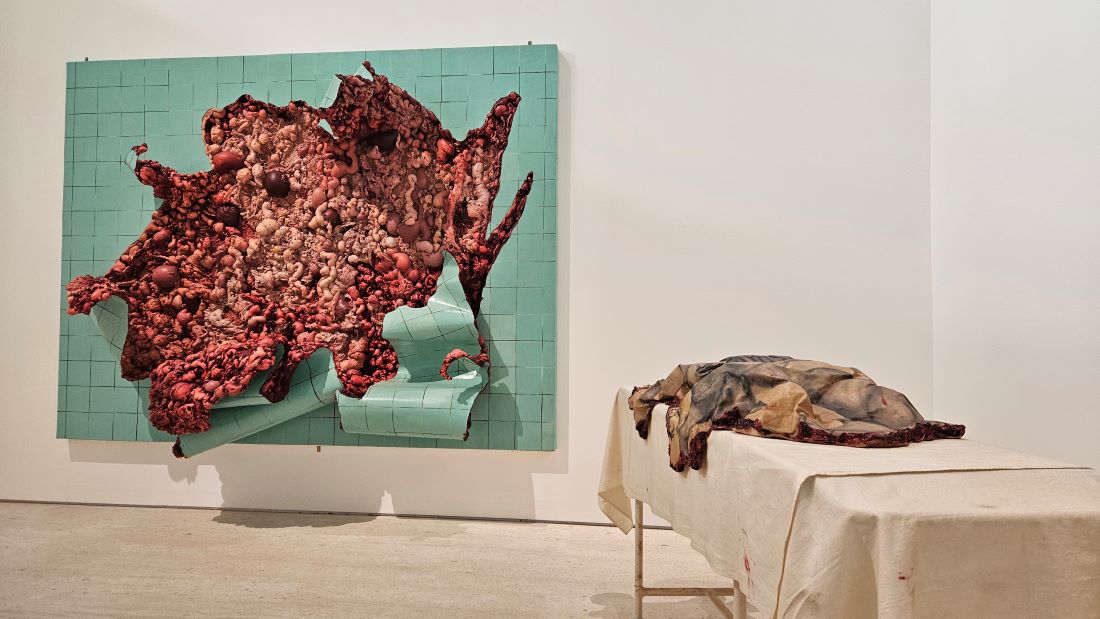
With subtleness, the title of the exhibition can be understood as a summary of the artistic discourse of both. To highlight the feminism that unites them and the exploration of social themes, namely gender violence or “the subjugation of lands and bodies that is at the basis of colonization” (note in Paula Rego’s work, the rarely exhibited painting A primeira missa no Brasil, where the artist evokes the 19th-century painting by Victor Meirelles “which depicts the Tupi people attending a Catholic mass”), a verse from Poemas aos homens do nosso tempo, written in the 1970s by the Brazilian poet and novelist Hilda Hilst, was used. In it, one senses “the raw nature of this encounter between two prominent artists of our time”, as highlighted by curator Helena de Freitas, who also adds a very strong and artistically relevant point of affinity: “both grew up in dictatorships based on societies marked by patriarchal rigidity and Catholicism.”
Between Your Teeth thus refers to the way in which Rego and Varejão’s art approaches the representation of “literal and metaphorical” bodies, reflecting “how patriarchy, colonialism and all forms of oppression feed off each other, chewing up people and their stories.”
Domestic space in the museum
Bringing together around 80 works, including a previously unseen one by Adriana Varejão, curators Helena de Freitas, Victor Gorgulho and the Brazilian artist herself, propose in Between Your Teeth what they define as “an immersive dramaturgy”. The works are arranged in 13 themed rooms, designed by Daniela Thomas, “in which each space, imbued with a domestic atmosphere, reveals new dimensions of the psychological depth and imaginative power of the artists.”
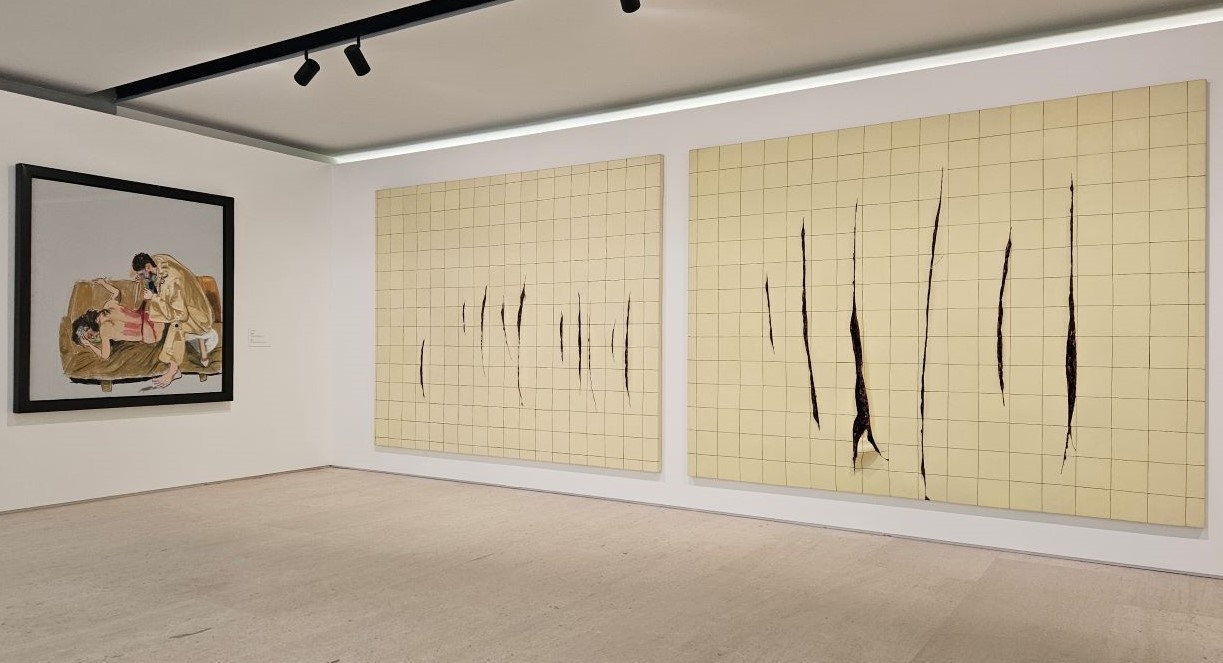
The relationship between the works in this “dramaturgical” device allows us to highlight the powerful dialogue between the private (the domestic world) and the public in which Rego and Varejão’s works are situated. Take, for example, the room entitled “Cleansing Rituals”, where a set of black and white engravings and lithographs on the theme of abortion, created by the Portuguese artist in the aftermath of the 1998 referendum that blocked the legalization of voluntary termination of pregnancy in Portugal, coexist with the engravings and paintings from Varejão’s “Sauna” series. In them, the Brazilian artist confronts us with spaces that are apparently uninhabited and aseptic, but “impregnated with impurities”, such as bodily fluids and human waste, namely blood and hair. The dialogue between the works of the two artists in this space is a good demonstration of the success of the curatorial option that governs the exhibition.
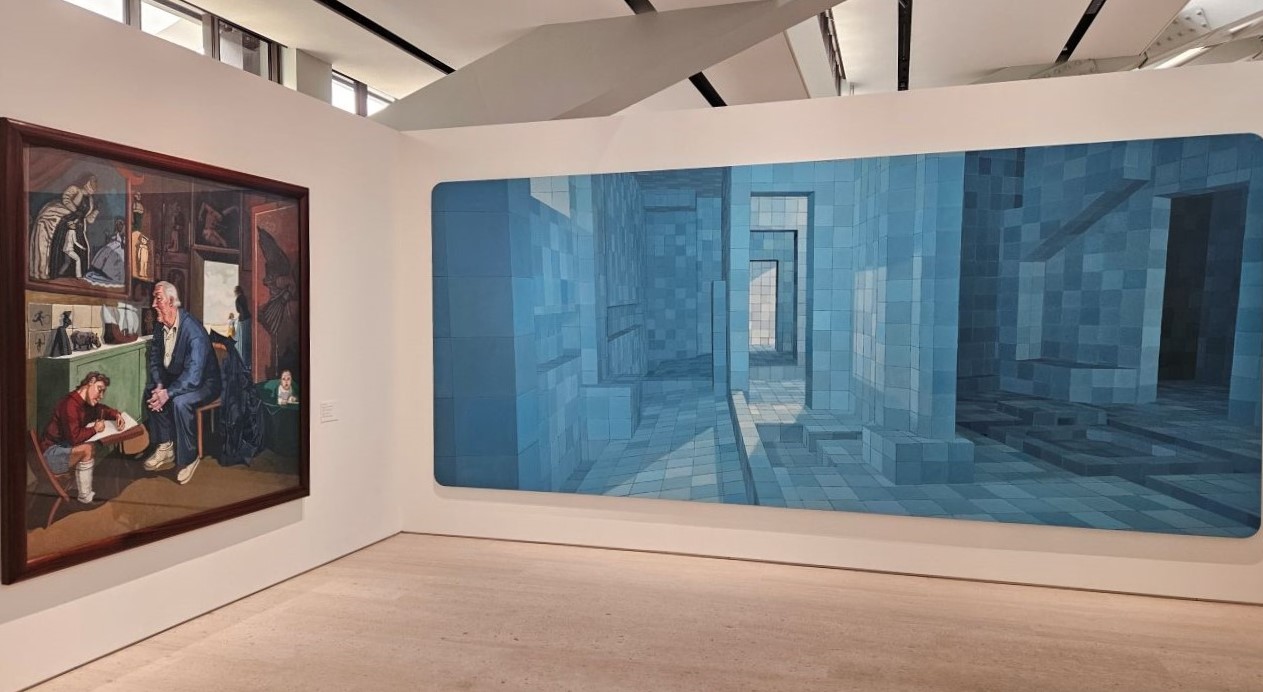
If Paula Rego needs no introduction, for those less familiar, Adriana Varejão is one of the most important Brazilian artists of today, with her work present in the collections of the largest institutions in the world, such as Tate Modern, in London, or the Metropolitan Museum of Art, in New York. In Lisbon, the artist from Rio de Janeiro held two major solo exhibitions: the first, in 1998, at Pavilhão Branco of the then-called Museu da Cidade; the second, at Centro Cultural de Belém, in 2005. In Portugal, her works are part of the collections of Berardo Collection – MAC/CCB and Serralves Foundation, in Porto.
Between Your Teeth is on display in the CAM Nave until the end of the summer, and can be visited daily, except on Tuesdays.
Sharing, risk, tolerance and empathy – these are the four words chosen by Luís Vieira and Rute Ribeiro to define the 25 years of FIMFA Lx – International Festival of Puppetry and Animated Forms. “We have dreams, ideas and projects, will and courage, but these don’t seem to be the times for dreamers. The world has changed. We need to build new horizons, regain confidence, open up our imagination and let ourselves be carried away by beauty, poetry and the extraordinary. Celebrate the power of puppetry and all these artists who continue to use their power to challenge, inspire and connect us, without borders or colours. This edition celebrates an artistic adventure and pays tribute to all those who share their creativity, their concerns, their ingenuity, their humour and their emotions with us and the audience”, they write about the 25th edition of FIMFA, that takes place from May 8 to June 1.
Over 25 days, there are more than two dozen shows presented by the festival, in several venues in Lisbon. As Rute Ribeiro highlights, this edition brings very different proposals and various creations by women. This is the case of the opening show, at Teatro São Luiz: A Doll’s House, inspired by the play by Henrik Ibsen, staged by Yngvild Aspeli, whose Moby Dick we already saw in the 2021 edition, today considered one of the world’s leading figures in puppetry. A play with human-sized puppets, which she brings to Lisbon with her company Plexus Polaire.
Another adaptation of a classic is The Rite of Spring, by Italians Dewey Dell, which takes the stage at Teatro Variedades, in co-production with Teatro Nacional D. Maria II. “A collective that we have wanted to bring to the festival for a long time”, points out Rute Ribeiro, speaking of these creators (three of them, sons of playwright and director Romeo Castellucci) who stage Stravinsky’s work with insect-inspired costumes.

Also featured is Epidermis Circus: The Weirdest Puppet Show You’ve Ever Seen, by the Canadian company SNAFU – Society of Unexpected Spectacles, that “mixes object theater and live projection, exploring the human body in a surreal and provocative way”. Among the Portuguese artists, there will be shows by A Tarumba (Luís Vieira and Rute Ribeiro present Miniature Short Dramas), the Porto Puppet Theatre, the Limite Zero company, Sonoscopia & Teatro do Ferro and Ricardo Ávila with Vumteatro. In total, there are 13 countries at FIMFA, which show puppetry and animated forms as different as robot vacuum cleaners, flying knives, eggs and chickens (after all, who came first?) or microscopic puppets.
On stage, the performing arts come together with painting, video, science and literature. There almost seems to be no limits. As Rute Ribeiro and Luís Vieira state, “creators from various latitudes, and unafraid to take risks, share their worldview, awaken emotions and questions, through multifaceted and unusual artistic proposals. The invited artists play with feelings, what connects people, their relationship with places and objects. They observe the world. They show other ways of seeing and understanding what is around us”.
25 years later, FIMFA continues to open horizons in Lisbon. “We’re still here!”, its artistic directors assures. And we, with them.
The Italian Film Festival reached the age of majority and, it is confirmed, this 18th edition is, most likely, the most political of all. The motto appears right at the opening session, on April 9 at Cinema São Jorge, with the Portuguese premiere of The Great Ambition (Berlinguer – La grande ambizione). The life of Enrico Berlinguer, founder of Eurocommunism and historic general secretary of the Italian Communist Party between 1972 and 1984, the year of his death, is revisited in the latest work by director Andrea Segre.
For the Festival’s artistic director, Stefano Savio, “Segre’s beautiful film is a tribute to a unique figure in Italian politics, a man who sought to find compromises and consensus between different political forces in the midst of the Cold War”. Starring Elio Germano, the film focuses on the period in the 1970s, between the trip to Sofia, in which Berlinguer suffered an attack that is still shrouded in mystery, and the speech given at Festa dell’Unità in Genoa in 1978, following the assassination of Christian democracy leader Aldo Moro, and which, in a way, signified the failure of the political strategy of the leader of what was, at the time, the largest communist party in Western Europe.
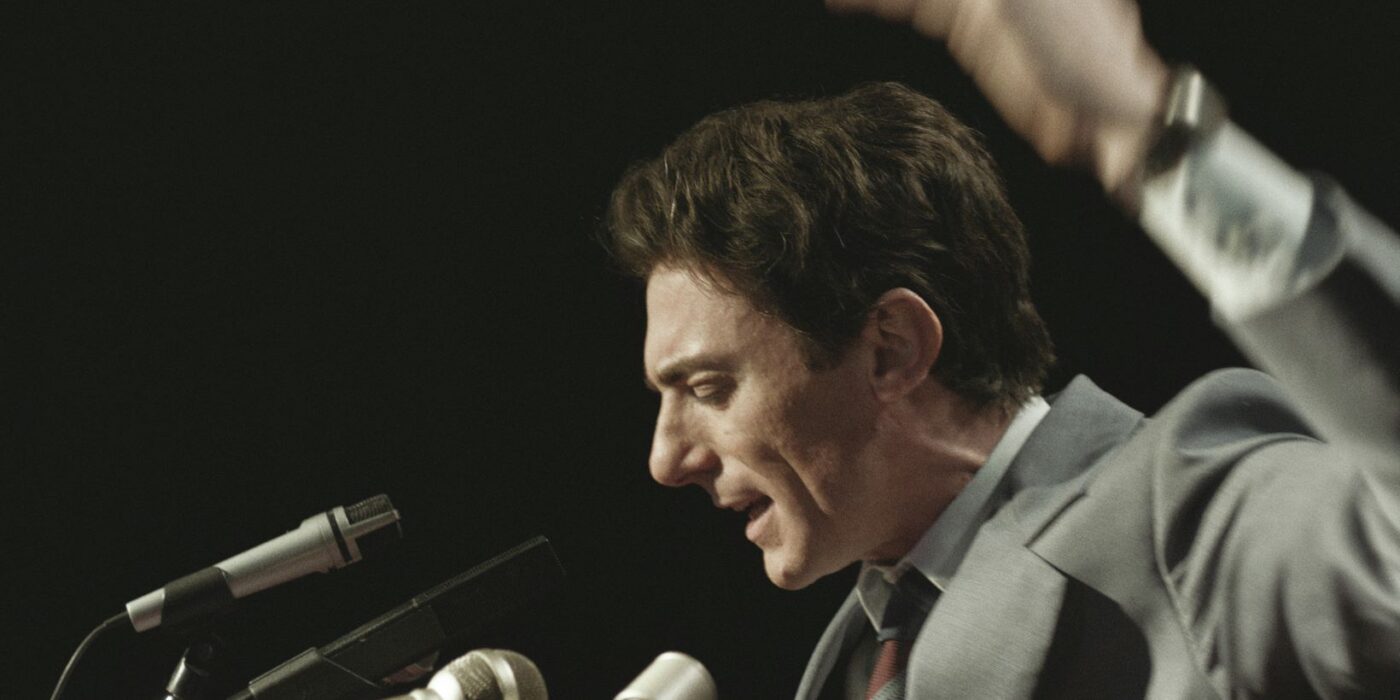
From the 1970s to the 1980s, the closing of the Lisbon edition of the festival – let’s not forget that the Festival travels from one end of the country to the other, and this year it passes through more than two dozen cities on the mainland –, on April 17 also at Cinema São Jorge, is done, according to Savio, with “an Italian-style Boggie Nights” (a reference to the 1997 film by Paul Thomas Anderson).
Premiered at the last Rome Festival, Diva Futura, by Italian-American director Giulia Louise Steigerwalt, follows the daily life of Gianni Schicchi’s agency, responsible for the fame of two porn stars who, years later, would shake up Italian politics: Ilona Staller, known worldwide as Cicciolina, founder of the Love Party and ex-wife of American artist Jeff Koons; and Moana Pozzi, who ran for mayor of Rome in the early 1990s.
“Pereira sono io!“
To mark the centenary of il divo Marcello Mastroianni (1924-1996), the Italian Film Festival has prepared a special programme that includes, in addition to the film screenings, two photography exhibitions about the career of one of the most famous actors in European cinema.
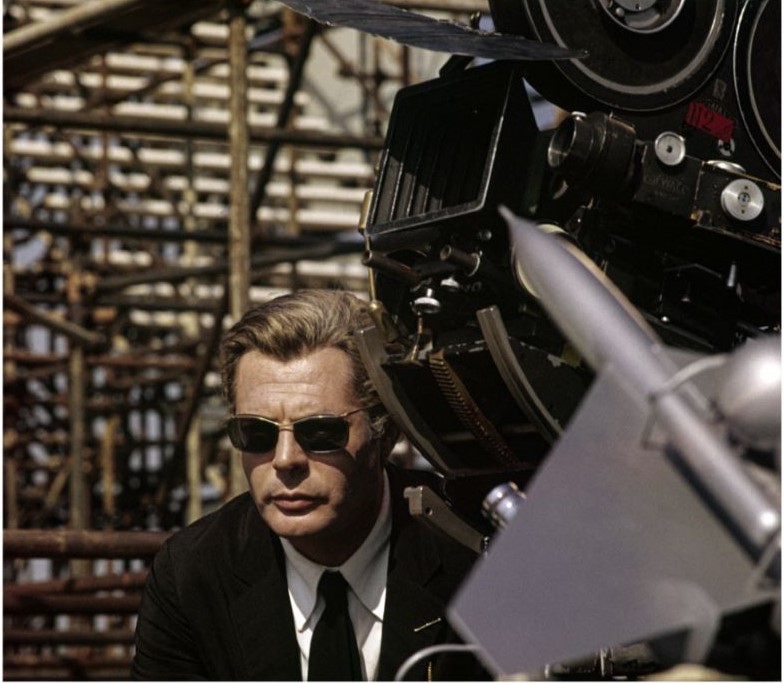
The first, on display at Cinema São Jorge during the Festival, is entitled Marcello come here… Cent’anni e oltre cento volte Mastroianni [… a hundred years and more than a hundred times Mastroianni] and brings together more than a hundred images, all in large format, from the photographic archive of the Cineteca Nazionale. The second comes as a complement to the screening of Anna Maria Tatò’s documentary, Mi recordo, sì io mi recordo, a “true artistic and spiritual testament” by the actor, shot in Portugal during the filming of his latest feature film: Viagem ao Princípio do Mundo, by Manoel de Oliveira. Through a set of photographs from various national and international archives, the actor’s career in Portugal is revisited, a country where, in addition to Oliveira’s film, he starred, shortly before, in Afirma Pereira, by director Roberto Faenza.
It is precisely to mark the 30th anniversary of the Faenza film, an adaptation of the novel of the same name by Antonio Tabucchi, that the Festival opens a section entitled Pereira sono io!, which reflects on the connection that Mastroianni established with Portugal in the final phase of his prolific career. Regarding the title of this programming space, Stefano Savio says that the exclamation “Pereira sono io!” was said by the actor to Tabucchi himself when he finished reading the book and learned of the intention to adapt it for the cinema.
This and other stories can be heard in greater detail on April 16, told by Roberto Faenza. The director will be in Lisbon to attend the screening of the film and the world premiere of the documentary Sostiene Pereira 30, by Augusto Pelliccia, which marks the 30th anniversary of its premiere.
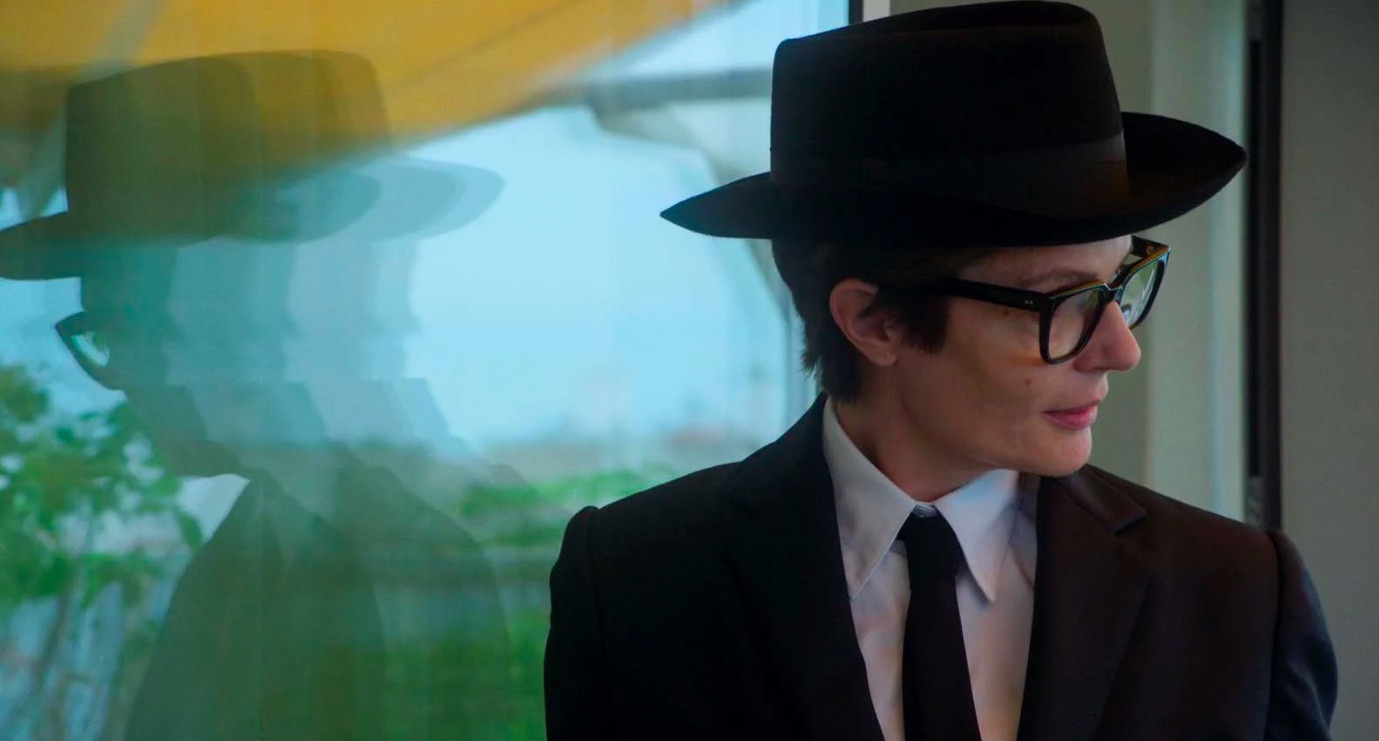
But that’s not all. The Mastroianni centenary brings to the Festival, in national premiere, the new film by Christophe Honoré, Marcello Mio, with Chiara Mastroianni starring in “a surreal comedy where she herself lives as if she were her father”; and the return to the big screen of two of the actor’s emblematic films: 8 1/2, by Federico Fellini, and Una giornata particolare, by Ettore Scola (showing between April 11 and 14 at Cinema Fernando Lopes).
Still on the subject of the dazzling years of Italian cinema, writer and screenwriter Francesco Piccolo, author of the book La Bella Confusione, will be at the Festival on April 12, “to tell episodes that took place in 1963 between the sets of The Leopard [by Luchino Visconti] and 8 1/2 by Fellini, with Claudia Cardinale being fought over by two directors who did not like each other at all”.
The “unknown” Pietrangeli and the focus
on the cinema of Ticino canton
As part of the Festival, the retrospective Antonio Pietrangelie, esse desconhecido, begins on April 1st at Cinemateca Portuguesa, with the screening of Il sole negli occhi. According to the institution’s deputy director, Nuno Sena, “he is one of the great masters of Italian cinema, whose filmography deserves to be placed alongside that of other prominent Italian authors of the 1950s and 60s, but whose premature death will have, in a certain way, become secondary”.
“Filmmaker of women”, for having been “someone who filmed the female condition like few others, simultaneously deconstructing the myths associated with masculinity”, this retrospective consists of the 13 feature films that Pietrangelie directed between 1953 and 1968, the year of his death. Works such as Adua e le compagne, with the French actress Simone Signoret, La Visita, a film that gave Sandra Milo the interpretation of her life, and Io la conoscevo bene, with the unforgettable Stefania Sandrelli, confirm Pietrangelie as “one of the authors who best made the transition between neorealism and commedia all’italiana”.
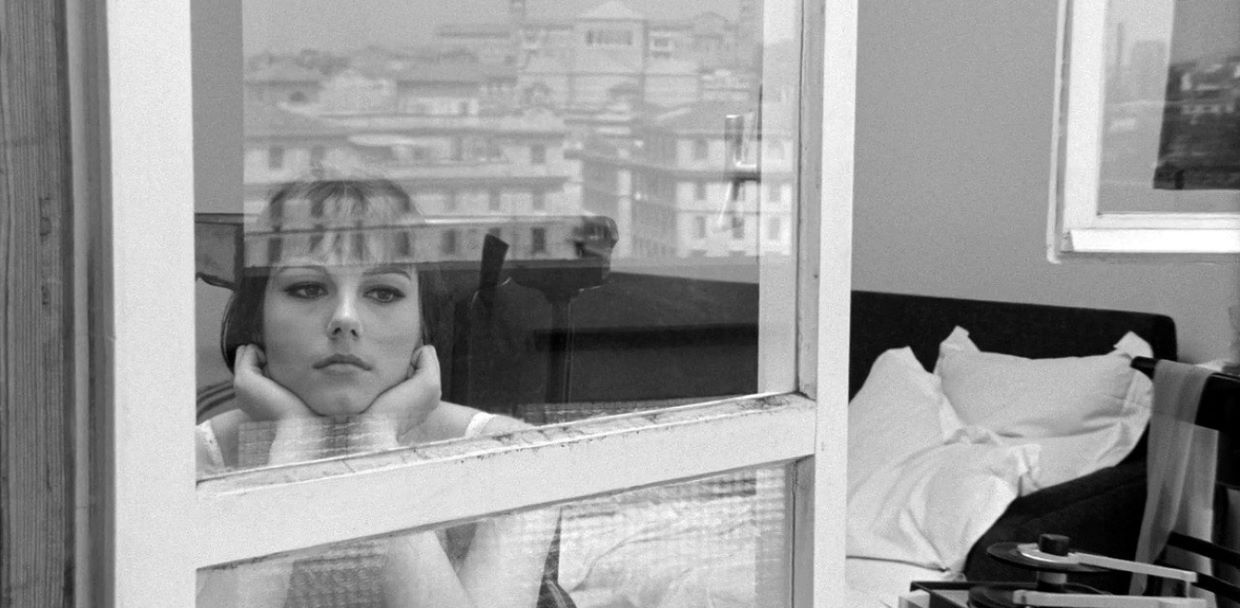
Another “unknown” highlighted in this edition is Italian-language Swiss cinema. In collaboration with Swiss Film, the Locarno Festival and the Swiss Embassy, the Festival brings to Lisbon the acclaimed documentary on immigration, La prodigiosa trasformazione della classe operaia in stranieri, by Iraqi director Samir, and the disconcerting comedy Bon Schuur Ticino, by Peter Luisi, about a revolt by the people of Ticino against the obligation to speak French. In the section Il Corto, a set of short films originating from this Swiss canton are shown.
In addition to the Panorama section, dedicated to the great successes of Italian cinema from last year, the Festival includes, among others, a competitive section, with first and second works; the Sombras section, which this year combines historical and documentary archives with video art around the Portuguese and Italian decolonization processes; and an unmissable set of opera films, including Mario Martone’s breathtaking vision of Verdi’s La Traviata.
paginations here